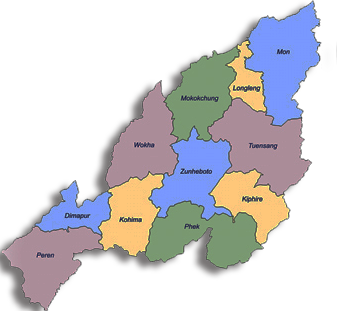The state of Nagaland is the 16th state of India. It was formed on the 1st of December, 1963. It is bordered by Assam on the West and North and Myanmar on its East. It is home to diverse indigenous tribes. The capital town; Kohima is a historic town which witnessed heavy fighting in the World War II.
Nagaland has an area of 16,579 square kilometers with a population of 19,80,602 (Census 2011) The state has 12 districts and is inhabited by 16 tribes namely Ao, Angami, Chang, Chakhesang, Kachari, Khiamniumgan, Konyak, Kuki, Lotha, Phom, Pochury, Rengma, Sangtam, Sema, Yimchunger and Zeliang. Each tribe is unique in character with its own distinct customs, language and traditional attire. Every tribe celebrates its festival. The ultimate festival is the Hornbill Festival which has become a global tourism event and is celebrated, every year, in the first week of December. It is one of the biggest tourism events in the India sub-continent which attract tourists from all parts of the world.
Nagaland is home to Mount Saramati and Japfü Peak which are some of the highest points of the Indo-Burmese mountains. Doyang river is the only major river of Nagaland. The catchment area of this river is also a hotspot for the migratory Amur Falcon birds. The state is home to a rich variety of flora and fauna.
Rhododendron is the state flower and Mithun, which is found only in the north-eastern states of India, is the state animal.

